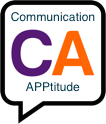 We are excited to have added Rebecca Silverman and Anna
Harnanft’s new book Developing Vocabulary and Oral Language in Young
Children (2015) to our arsenal of vocabulary tools. In it, Drs. Silverman and Harnanft share
several activities for reinforcing vocabulary including “Example/Non-Example,”
“Related Words,” and “Double Jeopardy.”
We are excited to have added Rebecca Silverman and Anna
Harnanft’s new book Developing Vocabulary and Oral Language in Young
Children (2015) to our arsenal of vocabulary tools. In it, Drs. Silverman and Harnanft share
several activities for reinforcing vocabulary including “Example/Non-Example,”
“Related Words,” and “Double Jeopardy.”
All of these activities require active involvement on the
part of the student, which research supports is a “must” if we want students to
“anchor” and truly own new words. These
games and activities help students prune and/or expand their understanding of
the new vocabulary words so that they have a deeper and broader understanding.
In Example/Non-Example,” students hold thumbs up or thumbs
down for each word the teacher/SLP offers for a newly-learned term. For older students, this might look more
like, “can veto laws, can make treaties with Senate approval and can issue
executive orders” and thumbs down to “writes laws” if studying “Executive
Power.”
 For an
elementary example, if the term is “vehicle”, students would hold thumbs up for
“airplane, train, scooter,” but would hold thumbs down for “playground.”
For an
elementary example, if the term is “vehicle”, students would hold thumbs up for
“airplane, train, scooter,” but would hold thumbs down for “playground.”
In “Related Words,” connections are made between new
words, and words already in the vocabulary “store”. By building connections, we
help students store and retrieve vocabulary more effectively. In this activity, young children would
brainstorm (and a bubble map could be drawn on the board or on paper) words
that go with the new vocabulary (e.g., vehicle). The teacher or SLP would help
demonstrate how these words can be further organized by subcategory. For
example, “car, crash, plane, train, subway, boat).
For older students, this might be useful for demonstrating
types of shelters (temporary, permanent) to include vocabulary such as
apartment versus condominium, teepee versus tent, or mansion versus shack.
In “Double Jeopardy,” students anchor understanding of
multiple-meaning words, while having to formulate questions. A board is set up, similar to the game
Jeopardy. Students answer questions such as, “A word that means two things: a
flying animal and sports equipment you use to hit a ball.” The student must
think flexibly to retrieve the question: “What is a bat?”
We are so excited to see how much focus is being placed on
the important skill of developing vocabulary.
Get creative, and engage in cool activities like these ones, rather than
just having students memorize definitions on index cards. They will thank you,
and their vocabulary stores will broaden and deepen!


No comments:
Post a Comment